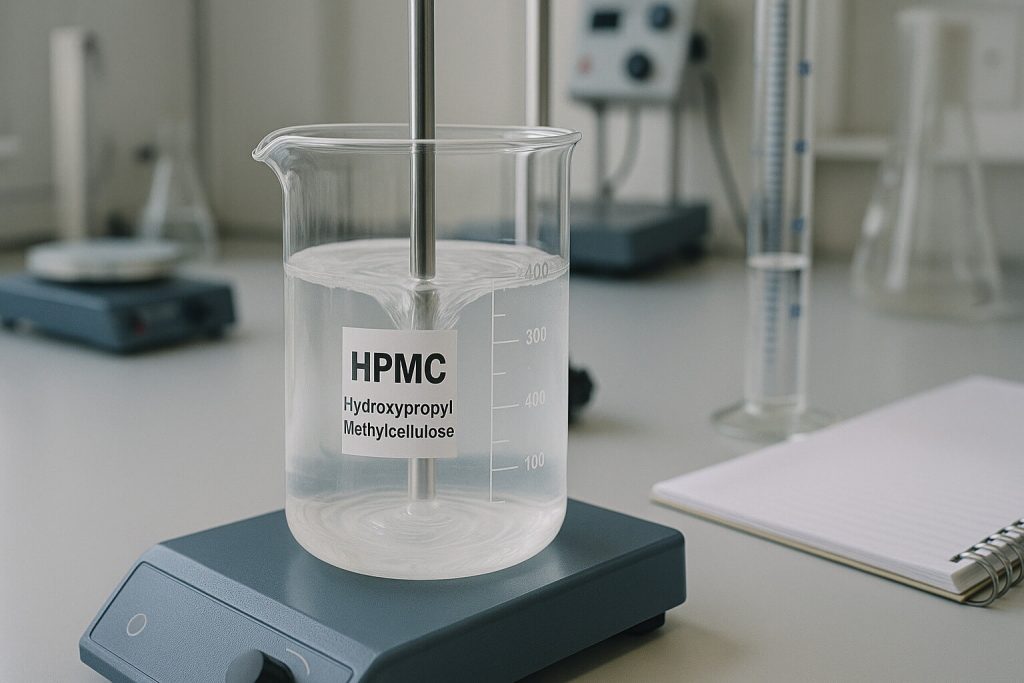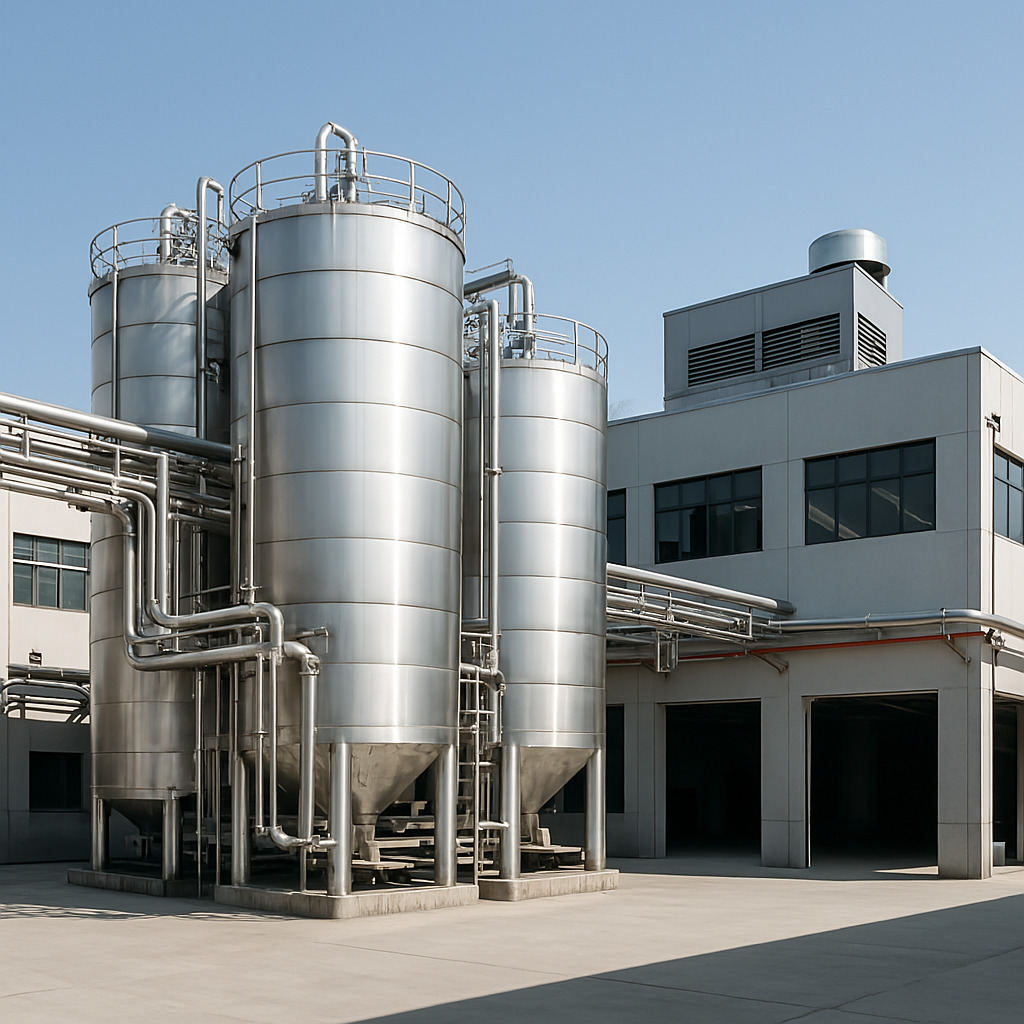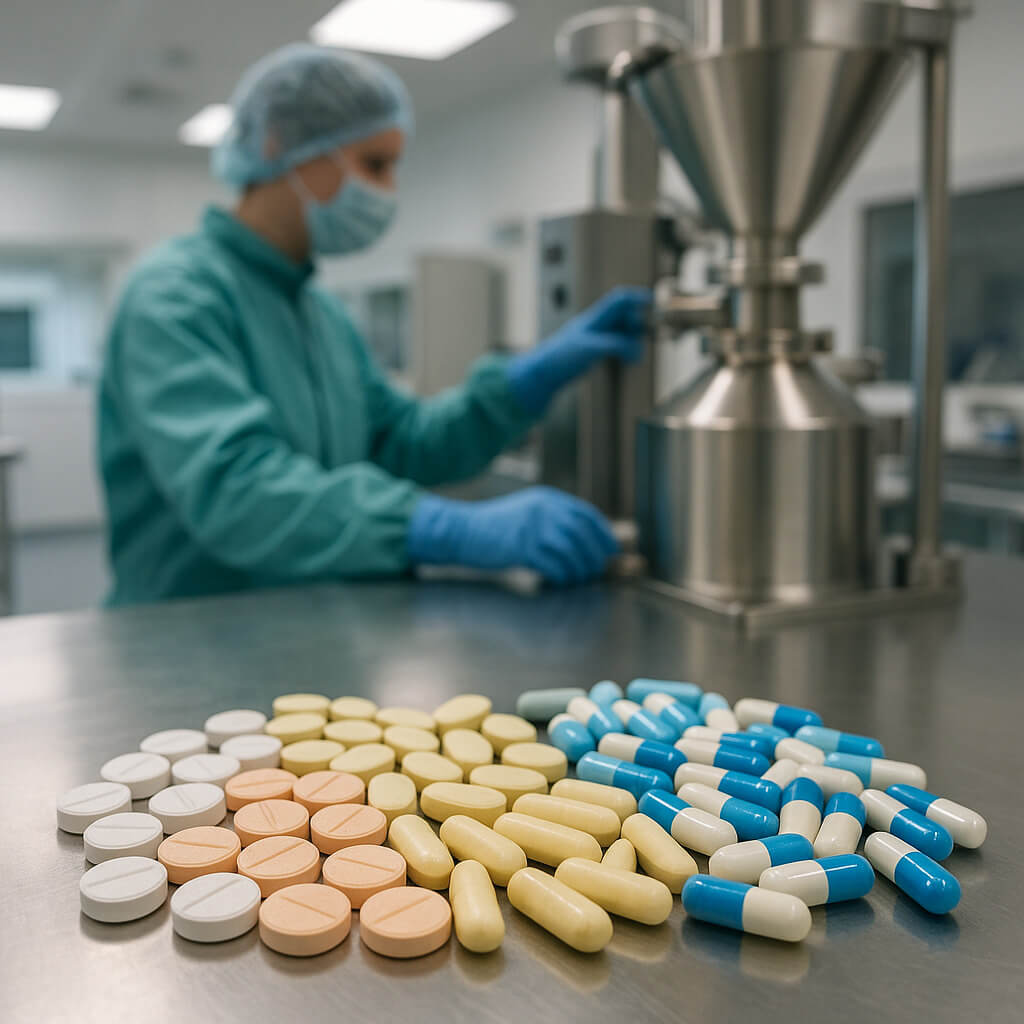Hydroxypropyl Methylcellulose (HPMC) is a versatile semi-synthetic polymer widely used across pharmaceutical, construction, food, and personal care industries. Its unique physicochemical properties make it an invaluable excipient and functional additive in countless formulations. This article examines the critical physicochemical characteristics that determine HPMC’s performance in various applications. Understanding these properties is essential for formulation scientists, product developers, and purchasing managers who need to select the optimal HPMC grade for specific applications. By exploring the molecular structure, solubility, rheology, and other key properties, this article provides practical insights for optimizing HPMC use in industrial products.

1. What Is The Molecular Structure That Defines HPMC’s Physicochemical Nature?
Hydroxypropyl Methylcellulose is a cellulose ether derived from natural cellulose through chemical modification. The transformation process involves treating cellulose with sodium hydroxide followed by reaction with methyl chloride and propylene oxide to introduce methoxyl and hydroxypropyl substituents onto the cellulose backbone.
Das macht es besonders: The precise arrangement and ratio of these substituents create HPMC’s unique physicochemical profile, allowing formulators to select grades with properties tailored to specific applications.
The chemical composition of HPMC consists of a cellulose backbone with varying degrees of methoxyl and hydroxypropyl substitution. The methoxyl groups contribute hydrophobic character, while hydroxypropyl groups enhance hydrophilicity, creating an amphiphilic molecule with balanced properties.
| Strukturparameter | Typischer Bereich | Messmethode | Auswirkungen auf Eigenschaften |
|---|---|---|---|
| Methoxylgehalt (%) | 16.5-30 | Gaschromatographie | Ein höherer Gehalt erhöht die organische Löslichkeit und die thermische Gelierung |
| Hydroxypropyl-Gehalt (%) | 4-32 | Gaschromatographie | Higher content improves water solubility and surface activity |
| Substitutionsgrad (DS) | 1.2-2.0 | NMR spectroscopy | Bestimmt das gesamte hydrophile/hydrophobe Gleichgewicht |
| Molekulargewicht (Dalton) | 10,000-1,500,000 | GPC/SEC | Bestimmt Viskosität und mechanische Festigkeit |
Substitution patterns in HPMC are not uniform along the cellulose chain but follow a statistical distribution. The three hydroxyl groups in each anhydroglucose unit have different reactivity, resulting in preferential substitution at certain positions. This non-uniform substitution contributes to HPMC’s complex solution behavior.
Molecular weight distribution significantly influences HPMC’s functional properties. Commercial HPMC grades typically have polydispersity indices between 2 and 5, indicating a relatively broad distribution of chain lengths. This distribution affects solution viscosity, mechanical properties of films, and dissolution kinetics.
2. How Do The Solubility Properties Of HPMC Influence Its Applications?
The solubility characteristics of HPMC represent one of its most commercially significant physicochemical properties, directly influencing its functionality across diverse applications.
What you might find surprising is that HPMC exhibits unusual temperature-dependent solubility behavior that can be strategically leveraged in various manufacturing processes and applications.
Die temperaturabhängige Löslichkeit ist vielleicht das markanteste Löslichkeitsmerkmal von HPMC. Im Gegensatz zu den meisten Materialien, deren Löslichkeit mit steigender Temperatur zunimmt, weist HPMC ein umgekehrtes Löslichkeitsverhalten auf. Bei niedrigeren Temperaturen (typischerweise unter 50 °C) löst sich HPMC leicht in Wasser und bildet klare Lösungen. Mit steigender Temperatur nimmt die Löslichkeit ab, bis eine Fällungstemperatur (typischerweise 65–90 °C) erreicht ist. Bei diesem Punkt erfährt das Polymer eine Phasentrennung und bildet ein wärmehärtendes Gel.
| Temperaturbereich | HPMC-Löslichkeitsverhalten | Auswirkungen auf die Anwendung | Überlegungen zur Verarbeitung |
|---|---|---|---|
| Unter 5 °C | Langsame Auflösung, hohe Viskosität | Längere Hydratationszeit erforderlich | Eine Vordispergierung in heißem Wasser kann vorteilhaft sein |
| 5-30°C | Optimale Auflösung, stabile Lösungen | Ideal für die meisten wässrigen Anwendungen | Standardverarbeitungsbedingungen geeignet |
| 30-50°C | Abnehmende Löslichkeit, erhaltene Klarheit | Sorgfältige Temperaturkontrolle erforderlich | Überwachen Sie Viskositätsänderungen während der Verarbeitung |
| 50-70°C | Annäherung an die Unlöslichkeit, zunehmende Trübung | Kann zu einer Instabilität der Formulierung führen | Erwägen Sie die Heiß-/Kalt-Technik zur Dispersion |
| Über 70°C | Unlöslich, bildet hitzehärtendes Gel | Kann als funktionelle Barriere verwendet werden | Erfordert Kühlung zur Wiederauflösung |
Solvent compatibility extends beyond water to include various mixed solvent systems. HPMC is soluble in many binary water-organic solvent mixtures, with solubility depending on the organic component and the HPMC substitution pattern. Typically, HPMC with higher methoxyl content shows better compatibility with organic solvents such as ethanol and propylene glycol.
Dissolution kinetics involve several stages. Initially, water penetrates the polymer particles, causing swelling and gel layer formation around each particle. As hydration continues, polymer chains disentangle and diffuse into the bulk solution. The rate-limiting step is typically the disentanglement and diffusion phase, influenced by particle size, molecular weight, and substitution pattern.
3. What Rheological Characteristics Make HPMC Valuable In Various Industries?
The rheological properties of HPMC—its flow and deformation behavior in solution—represent some of its most commercially valuable physicochemical characteristics. These properties determine how HPMC functions as a thickener, stabilizer, and processing aid.
Here’s the key insight: HPMC’s complex rheological behavior combines several beneficial properties that would typically require multiple additives, allowing formulators to achieve desired flow characteristics with a single ingredient.
Viscosity profiles across concentration ranges follow a power law relationship, with viscosity increasing exponentially as concentration increases. This relationship typically follows the equation η = K·C^a, where η is viscosity, C is concentration, and K and a are constants specific to the HPMC grade.
| Rheologische Eigenschaften | Messmethode | Typische Werte | Anwendungsbedeutung |
|---|---|---|---|
| Scheinbare Viskosität | Rotationsviskosimeter | 3–200.000 mPa·s (2%-Lösung) | Bestimmt das Fließverhalten und die Eindickungseffizienz |
| Streckgrenze | Spannungsrampentest | 0,5–20 Pa (2%-Lösung) | Kontrolliert den Durchhangwiderstand und die Federungsstabilität |
| Thixotropieindex | Hystereseschleifenbereich | 1.1-2.5 | Zeigt die zeitabhängige Erholung nach dem Scheren an |
| Speichermodul (G') | Oszillationsprüfung | 1-500 Pa | Spiegelt die elastische Komponente und die Gelstärke wider |
| Loss Modulus (G”) | Oszillationsprüfung | 0.5-200 Pa | Indicates viscous component and flowability |
Shear-dependent flow behavior is another critical rheological characteristic of HPMC solutions. HPMC exhibits pseudoplastic (shear-thinning) behavior, where viscosity decreases as shear rate increases. This property provides significant processing advantages—solutions flow readily during high-shear operations like mixing, pumping, or spraying, but maintain higher viscosity at rest to provide stability.
Thixotropic and pseudoplastic properties often coexist in HPMC solutions. While pseudoplasticity refers to instantaneous viscosity reduction under shear, thixotropy involves time-dependent viscosity recovery after shearing stops. HPMC solutions typically show moderate thixotropy, with viscosity gradually returning to its original value after shear is removed.
4. How Do Surface And Interfacial Properties Of HPMC Affect Formulation Performance?
Die Oberflächen- und Grenzflächeneigenschaften von HPMC spielen in vielen Anwendungen eine entscheidende Rolle und beeinflussen Phänomene wie Benetzung, Ausbreitung, Emulgierung und Stabilisierung. Diese Eigenschaften beruhen auf der amphiphilen Natur von HPMC, das sowohl hydrophile als auch hydrophobe Gruppen enthält.
Was macht dieses Produkt besonders wertvoll? is that HPMC provides moderate surface activity without the drawbacks often associated with conventional surfactants, such as irritation potential or excessive foaming.
Die Fähigkeit von HPMC, die Oberflächenspannung zu modifizieren, ist signifikant, wenn auch weniger ausgeprägt als die von herkömmlichen Tensiden. HPMC reduziert die Oberflächenspannung von Wasser typischerweise von ca. 72 mN/m auf 42–55 mN/m, abhängig von der Qualität und Konzentration.
| Oberflächen-/Grenzflächeneigenschaften | Messmethode | Typische Werte | Auswirkungen der Formulierung |
|---|---|---|---|
| Reduzierung der Oberflächenspannung | Du Noüy-Ringmethode | 42-55 mN/m (1%-Lösung) | Verbessert die Benetzung und Verteilung |
| Grenzflächenspannung (Öl/Wasser) | Spinning-Drop-Methode | 15-25 mN/m | Erleichtert die Emulsionsbildung |
| Kontaktwinkel auf hydrophober Oberfläche | Goniometer | 40-65° | Verbessert die Untergrundbenetzung |
| Kritische Aggregatkonzentration | Oberflächenspannungsdiagramm | 0,01-0,1% (w/v) | Bestimmt die minimale wirksame Konzentration |
Interfacial activity at liquid-liquid boundaries enables HPMC to function as an emulsion stabilizer. At oil-water interfaces, HPMC molecules orient with hydrophobic groups toward the oil phase and hydrophilic groups toward the water phase, reducing interfacial tension and forming a protective layer around droplets.
Adsorption behavior at solid-liquid interfaces makes HPMC valuable in applications involving particle suspensions or interactions with solid surfaces. HPMC adsorbs onto many solid surfaces through hydrogen bonding and hydrophobic interactions, forming a protective layer that prevents particle aggregation through steric stabilization.
5. What Thermal Properties Must Be Considered When Processing HPMC?
The thermal properties of HPMC significantly influence its processing requirements and application performance. Understanding these thermal characteristics is essential for proper material selection and process design.
But here’s what you need to know: HPMC weist ein einzigartiges thermisches Verhalten auf, das sowohl Herausforderungen als auch Chancen bei der Verarbeitung und Anwendungsentwicklung mit sich bringt.
Das Phänomen der thermischen Gelierung stellt die charakteristischste thermische Eigenschaft von HPMC dar. Wenn HPMC-Lösungen über eine kritische Temperatur (typischerweise 65–90 °C, je nach Qualität) erhitzt werden, kommt es zu einer Phasentrennung und es bildet sich eine reversible Gelstruktur.
| Thermische Eigenschaften | Messmethode | Typische Werte | Auswirkungen auf die Verarbeitung |
|---|---|---|---|
| Gelierungstemperatur | Trübungspunkt, Rheologische Methoden | 65–90 °C (je nach Sorte) | Bestimmt die maximale Verarbeitungstemperatur in der Lösung |
| Glasübergangstemperatur (Tg) | Differenzial-Scanning-Kalorimetrie | 170-190°C | Beeinflusst die Verarbeitung und Lagerstabilität von Festkörpern |
| Beginn der thermischen Stabilität | Thermogravimetrische Analyse | 190-220°C | Legt die obere Temperaturgrenze für die Verarbeitung fest |
| Zersetzungstemperatur | Thermogravimetrische Analyse | 280-300°C | Kritischer Sicherheitsparameter für die Hochtemperaturverarbeitung |
Die Glasübergangstemperatur (Tg) für trockenes HPMC liegt typischerweise zwischen 170 und 190 °C, kann jedoch durch Feuchtigkeit oder Weichmacher deutlich reduziert werden. Die Tg gibt die Temperatur an, bei der HPMC von einem glasartigen, spröden Zustand in einen gummiartigen, flexiblen Zustand übergeht.
Thermal stability and degradation pathways are critical considerations for processing HPMC. The polymer begins to show signs of degradation at temperatures above 190-220°C, with significant decomposition occurring above 280-300°C. Degradation typically involves chain scission, resulting in reduced molecular weight and altered functional properties.
6. How Do The Binding And Film-Forming Properties Of HPMC Function?
The binding and film-forming capabilities of HPMC represent some of its most valuable functional properties, enabling applications ranging from pharmaceutical tablet formulation to construction adhesives and food coatings.
The critical factor to understand is that HPMC forms cohesive films and binding matrices through multiple physicochemical mechanisms, creating versatile performance characteristics that can be tailored to specific application requirements.
Adhesion mechanisms to various substrates involve several types of interactions. On polar surfaces like cellulose, glass, or metal oxides, HPMC adheres primarily through hydrogen bonding. On less polar surfaces, adhesion occurs through van der Waals forces and hydrophobic interactions with the methoxyl groups.
| Film/Binding Property | Messmethode | Influencing Factors | Application Relevance |
|---|---|---|---|
| Tensile Strength | Tensile testing | Molecular weight, Concentration | Determines film durability and handling properties |
| Elongation at Break | Tensile testing | Substitution type, Plasticizer content | Affects flexibility and resistance to cracking |
| Adhesive Strength | Peel or shear tests | Surface chemistry, Application method | Critical for binding and coating applications |
| Water Vapor Transmission Rate | Cup method, ASTM E96 | Film thickness, Substitution pattern | Determines moisture barrier properties |
The film formation process involves several stages. Initially, HPMC dissolves in water or a water-alcohol mixture to form a solution. As the solvent evaporates, polymer concentration increases, causing chain entanglement and eventual coalescence into a continuous film.
Mechanical properties of HPMC films can be precisely controlled through grade selection and formulation. Tensile strength typically increases with molecular weight, while elongation properties are influenced by substitution type—higher hydroxypropyl content generally yields more flexible films.
7. What Analytical Methods Are Used To Characterize HPMC’s Physicochemical Properties?
Accurate characterization of HPMC’s physicochemical properties is essential for quality control, product development, and regulatory compliance. Various analytical techniques provide complementary information about different aspects of HPMC’s structure and behavior.
What’s particularly important to recognize is that comprehensive characterization requires multiple analytical approaches, as no single method can fully capture HPMC’s complex physicochemical profile.
Spectroscopic techniques for structural analysis provide information about HPMC’s chemical composition and substitution patterns. Fourier Transform Infrared Spectroscopy (FTIR) identifies characteristic absorption bands associated with methoxyl and hydroxypropyl substituents. Nuclear Magnetic Resonance (NMR) spectroscopy provides more detailed information about substitution patterns.
| Analytical Method | Information Provided | Sample Preparation | Einschränkungen |
|---|---|---|---|
| Gas Chromatography | Methoxyl and hydroxypropyl content | Hydrolysis and derivatization | Destructive, no positional information |
| Size Exclusion Chromatography | Molekulargewichtsverteilung | Dissolution in mobile phase | Requires calibration standards |
| Differential Scanning Calorimetry | Thermal transitions, glass transition temperature | Minimal preparation | Complex interpretation for heterogeneous samples |
| Rheometry | Viscosity profiles, viscoelastic properties | Solution preparation | Results depend on measurement conditions |
Chromatographic methods for molecular weight determination primarily rely on Size Exclusion Chromatography (SEC), also known as Gel Permeation Chromatography (GPC). This technique separates HPMC molecules based on their hydrodynamic volume, with larger molecules eluting earlier than smaller ones.
Thermal analysis approaches include Differential Scanning Calorimetry (DSC), which measures heat flow associated with thermal transitions such as the glass transition temperature (Tg). Thermogravimetric Analysis (TGA) monitors weight loss during heating, providing information about moisture content, thermal stability, and decomposition pathways.
Abschluss
The physicochemical properties of Hydroxypropyl Methylcellulose (HPMC) represent a complex interplay of structural features, molecular interactions, and environmental responses that collectively determine its performance across diverse applications. From its unique molecular structure and substitution pattern to its solubility, rheological, surface, thermal, and film-forming properties, HPMC offers a versatile functionality profile that few other polymers can match.
Understanding these properties allows formulators and technical professionals to select the optimal HPMC grade for specific applications and to anticipate how the material will behave under various processing and use conditions. The interrelated nature of these properties means that changing one parameter—such as substitution pattern or molecular weight—often affects multiple functional characteristics, requiring a holistic approach to grade selection and formulation development.
Für Hersteller und Produktentwickler, die mit HPMC arbeiten, bedeutet dieses Wissen eine effizientere Materialauswahl, eine verbesserte Produktleistung und potenziell geringere Kosten durch Formulierungsoptimierung.
Häufig gestellte Fragen
Q1: How do the physicochemical properties of HPMC vary between different commercial grades?
Commercial HPMC grades vary primarily in three key physicochemical properties: viscosity (determined by molecular weight), substitution type (ratio and distribution of methoxyl and hydroxypropyl groups), and particle size. Viscosity grades range from 3 mPa·s to over 200,000 mPa·s (2% solution), directly affecting thickening efficiency, film strength, and binding capacity. Substitution types are classified by pharmacopeia designations (e.g., HPMC 2208, 2906, 2910), with higher methoxyl content increasing thermal gelation and organic solubility, while higher hydroxypropyl content improves cold water solubility and surface activity. Particle size grades range from fine (20-75 microns) to coarse (125-250 microns), affecting dissolution rate and flow properties.
Q2: What impact do storage conditions have on the stability of HPMC’s physicochemical properties?
Storage conditions significantly influence the stability of HPMC’s physicochemical properties. Temperature extremes should be avoided—high temperatures (>40°C) can cause gradual degradation through oxidation or hydrolysis, potentially reducing molecular weight and viscosity. Humidity control is crucial, as HPMC can absorb moisture from the air, potentially leading to caking, viscosity changes, or microbiological growth if moisture content exceeds 10%. Light exposure, particularly UV radiation, may contribute to oxidative degradation over extended periods. Proper packaging in moisture-resistant containers and storage in cool, dry conditions (ideally 15-30°C, <60% relative humidity) help maintain HPMC’s physicochemical properties.
Q3: How do the physicochemical properties of HPMC compare to other cellulose ethers?
HPMC offers a distinct physicochemical profile compared to other cellulose ethers. Versus Methylcellulose (MC), HPMC provides better cold water solubility and lower thermal gelation temperatures, though MC forms stronger gels. Compared to Carboxymethylcellulose (CMC), HPMC is non-ionic and thus maintains stable viscosity across a wider pH range but provides less electrolyte tolerance and lower viscosity efficiency. Hydroxyethylcellulose (HEC) provides higher clarity in solution than HPMC but lacks thermal gelation properties and has lower surface activity. Ethylcellulose (EC) is water-insoluble unlike HPMC, making it suitable for water-resistant applications. Hydroxypropylcellulose (HPC) offers better organic solubility than HPMC but typically at higher cost.
Q4: Which physicochemical properties are most critical for pharmaceutical applications of HPMC?
For pharmaceutical applications, the most critical physicochemical properties of HPMC depend on the specific dosage form and function. In controlled-release matrix tablets, viscosity grade and substitution type directly determine drug release kinetics—higher viscosity grades create more robust gel layers that slow drug diffusion, while substitution type affects the hydration rate and gel strength. For tablet film coatings, molecular weight and substitution type influence film formation, adhesion, and dissolution characteristics, with HPMC 2910 (high methoxyl) often preferred for its film properties. In capsule manufacturing, thermal gelation temperature and gel strength are crucial for shell integrity. For ophthalmic solutions, solution clarity, viscosity stability, and biocompatibility are essential.
Q5: Can the physicochemical properties of HPMC be modified post-manufacturing?
While the fundamental molecular properties of HPMC (substitution pattern and molecular weight) are fixed during manufacturing, several post-production modifications can alter its functional physicochemical properties. Physical modifications include particle size reduction through milling to increase dissolution rate, surface treatment with glyoxal or other agents to improve dispersibility, and agglomeration to enhance flow properties. Blending different HPMC grades can achieve intermediate properties or performance profiles not available from standard grades. Formulation approaches can significantly modify HPMC functionality—adding salts to alter solution properties, combining with other polymers for synergistic effects, or incorporating plasticizers to modify film characteristics.




